(Mexico)
Palenque was a Maya city state in southern Mexico that flourished in the 7th century.
The Palenque ruins date from 226 BC to AD 800.
After its decline, it was absorbed into the jungle of cedar, mahogany, and sapodilla trees, but has since been excavated and restored.
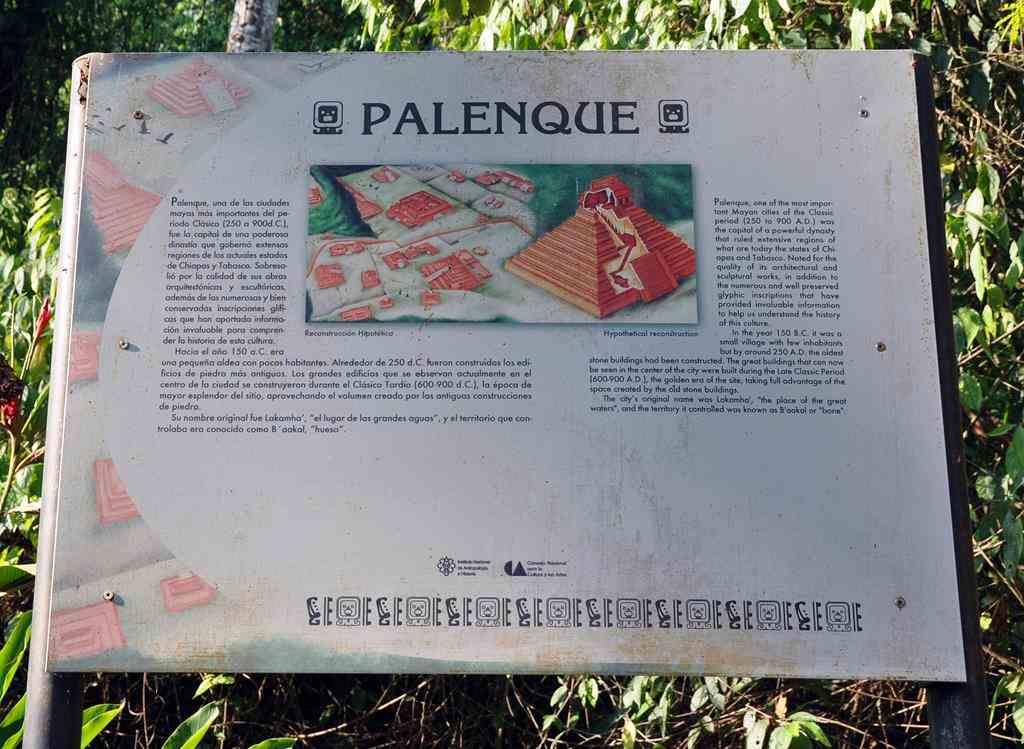
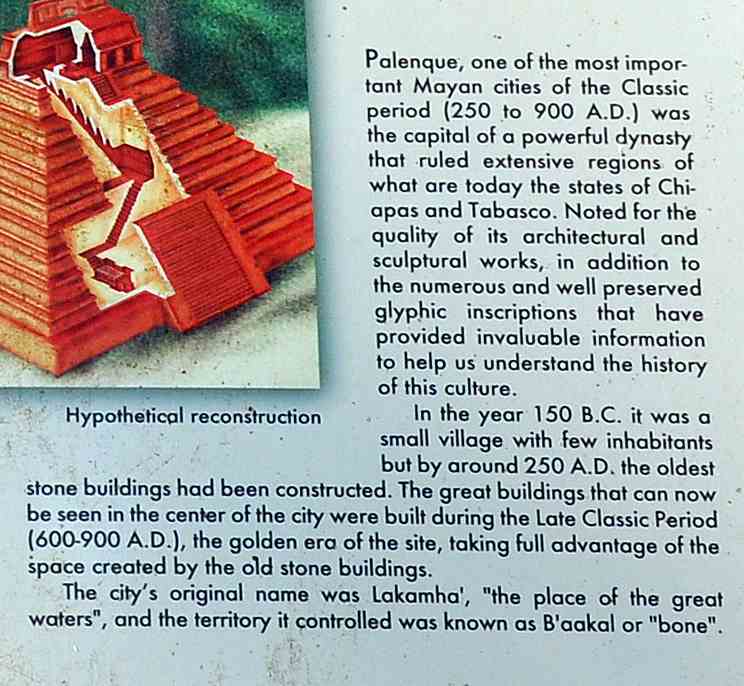
The Temple of the Cross
Palenque is a medium-sized site, smaller than Tikal or Chichen Itza, but it contains some of the finest architecture
sculpture, roof comb and bas-relief carvings that the Mayas produced.
Much of the history of Palenque has been reconstructed from reading the hieroglyphic inscriptions on the many monuments.
Historians now have knowledge of a long sequence of the ruling dynasty of Palenque in the 5th century.
The most famous ruler of Palenque was K'inich Janaab Pakal, or Pacal the Great, whose tomb has been found and excavated in the Temple of the Inscriptions.
The Temple of the Inscriptions
The Pelenque Palace
By 2005, the discovered area covered up to 2.5 km² , but it is estimated that less than 10% of the total area of the city is explored,
leaving more than a thousand structures still covered by jungle.
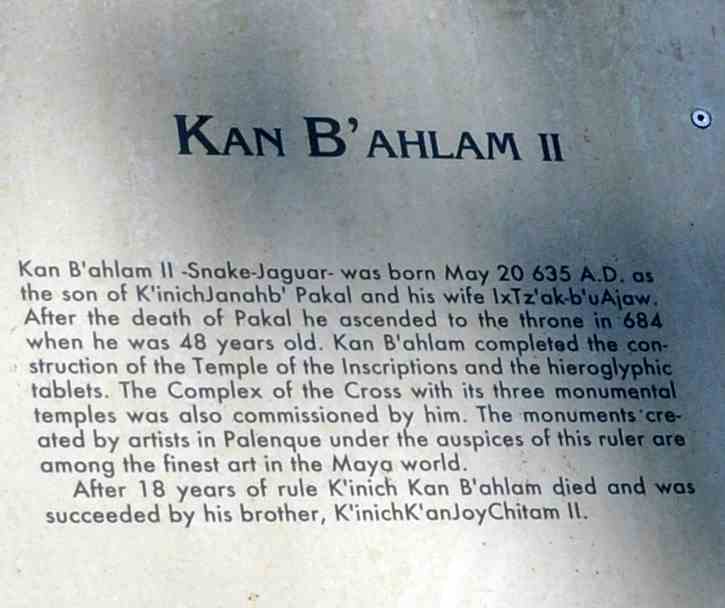
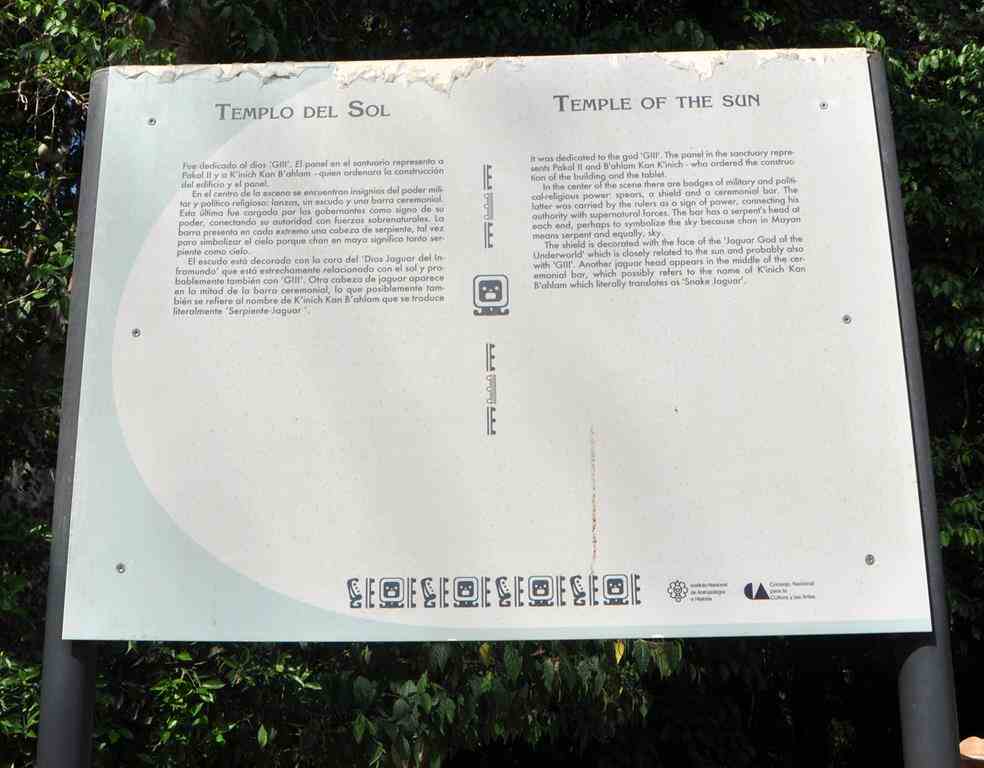
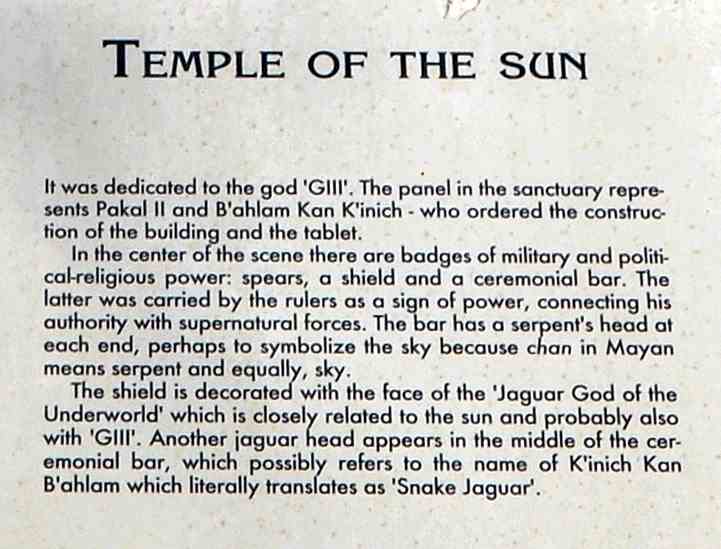
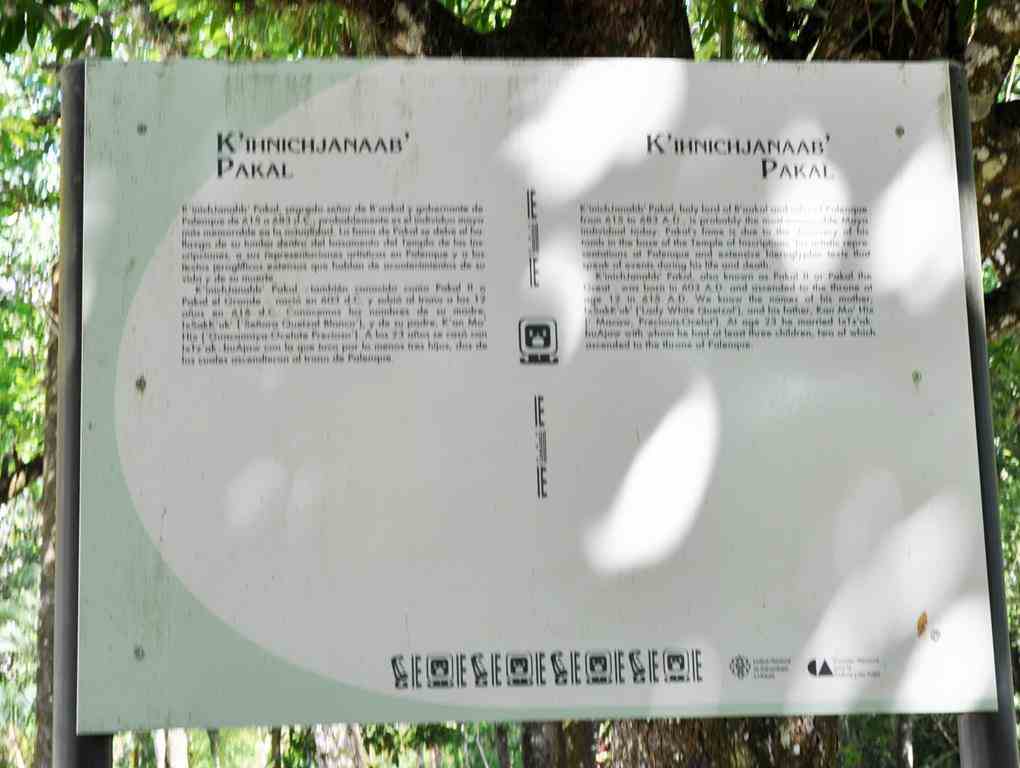
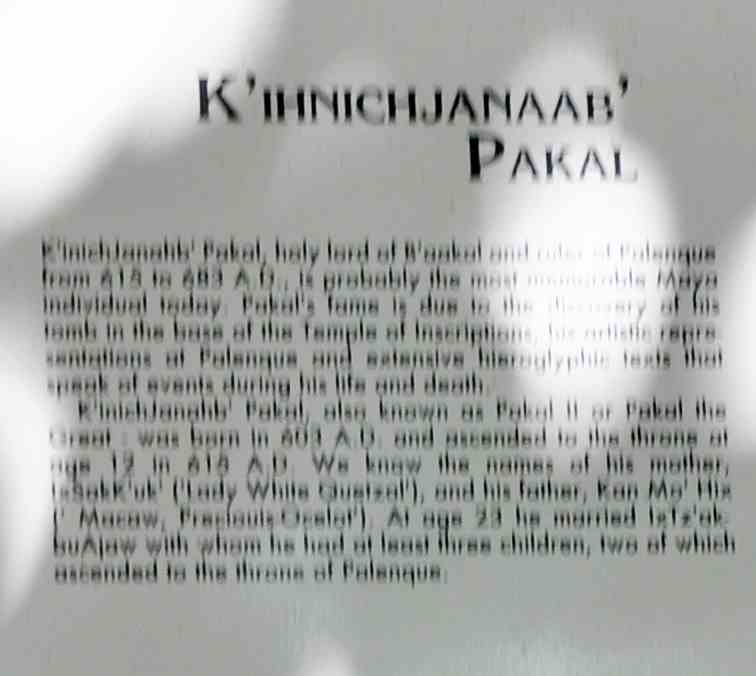
After visiting the ruins we had a guided walk in the surrounding jungle.
Celeste, A Mexican archaeology student, joined our Palenque tour
Palenque was great and one of the top sights on this 44-day Central American trip.